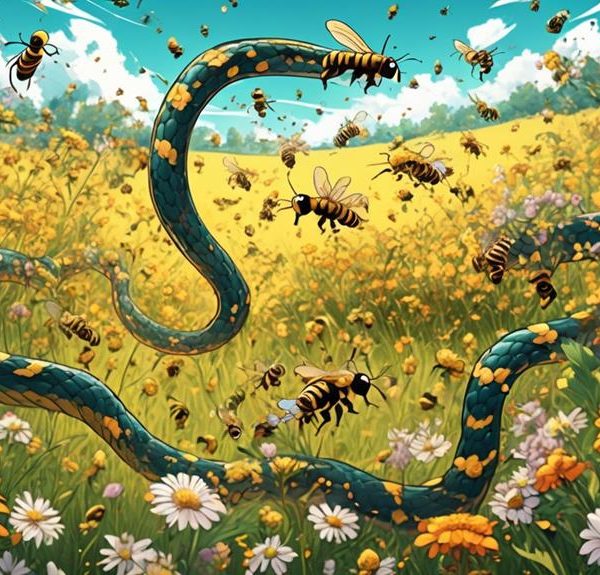Can bees alter their gender? Uncover the fascinating intricacies of bee society and the mysteries of biological sex.
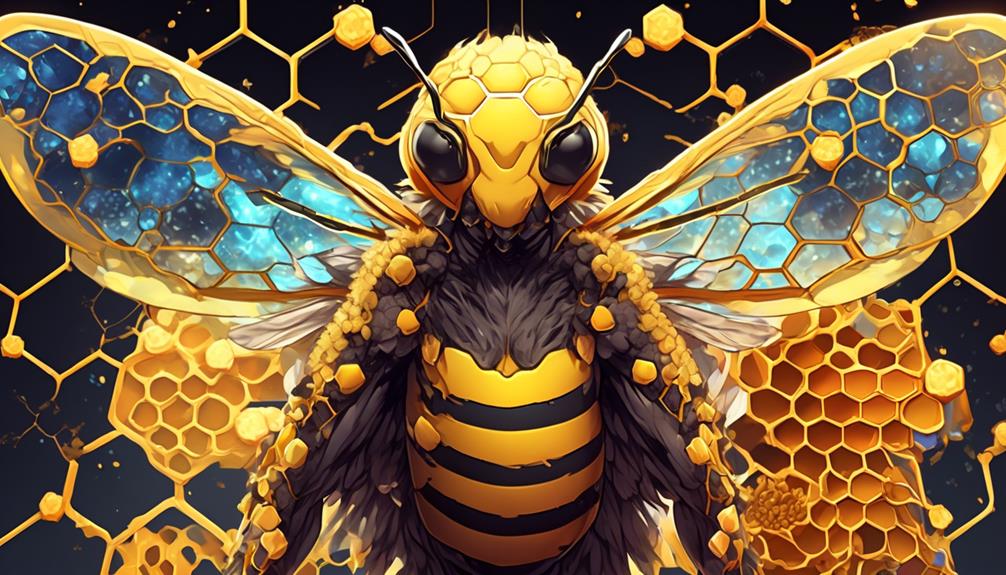
Can Bees Change Gender?
You've probably never contemplated the complexities of bee society, or considered the possibility that these industrious insects might 'switch teams', so to speak.
However, the question of whether bees can change gender is a fascinating one, filled with intricate details about genetics, bee hierarchies, and the very nature of biological sex itself.
While at first glance it may seem like a straightforward topic, it's not. The deeper you go, the more complex and intriguing it becomes, inviting a sense of wonder and curiosity about these remarkable creatures.
So why not pull up a chair, and let's explore this buzzing mystery together?
Key Takeaways
- Bee colonies function as superorganisms with a hierarchy that is crucial for their survival.
- The queen bee controls the sex of her offspring, with fertilized eggs becoming female worker bees and unfertilized eggs becoming male drone bees.
- Worker bees have various tasks and roles that change as they age, while drones' primary role is to mate with the queen.
- Bees have a unique genetic system called haplodiploidy, which determines their gender. They can also exhibit gender shifting, with some bees able to develop into fertile females due to multiple versions of the complementary sex determiner (csd) gene.
Understanding Bee Hierarchy
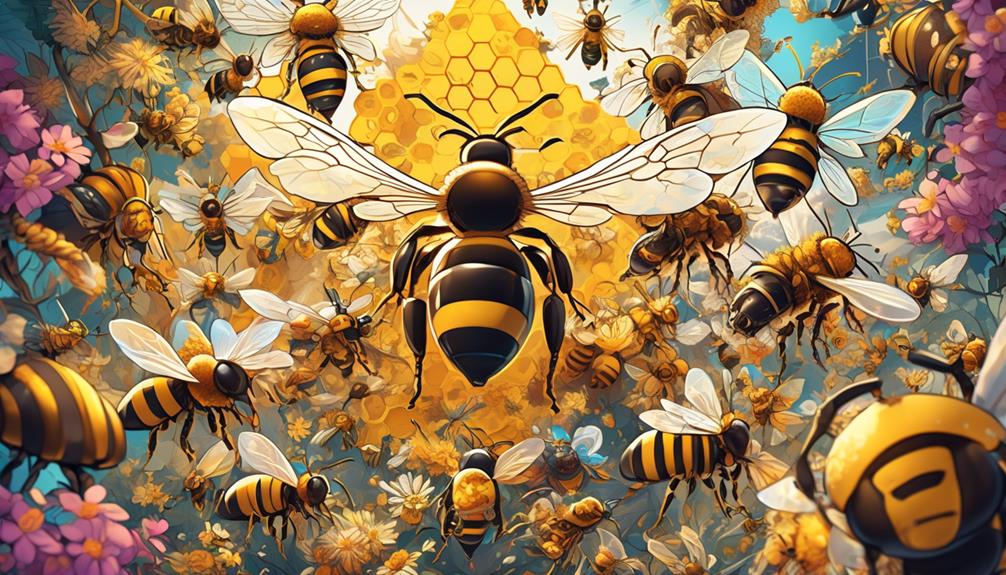
Before delving into the intriguing possibility of gender change in bees, it's essential to grasp the complex hierarchy that governs bee society. A bee colony functions as a superorganism, with each caste playing a pivotal role in the colony's survival.
You can't overlook that a typical hive houses three distinct types of bees: the queen, the workers, and the drones.
As the sole female with full reproductive capability, the queen's primary role is to lay eggs. She's the colony's heart and soul, but she doesn't rule alone. You'll find thousands of worker bees, sterile females that perform the bulk of the colony's labor. They're the foragers, the nursemaids, the builders, the defenders. Without them, the colony wouldn't survive.
The drones, on the other hand, are the only males in the hive. Their primary function? To mate with a virgin queen. However, they're a minority in the hive and expendable. Once mating season ends, they're often expelled from the colony.
Understanding this hierarchy is fundamental to appreciating how gender fluidity could potentially disrupt it, setting the stage for our exploration of gender change in bees.
Lifecycle of a Honeybee
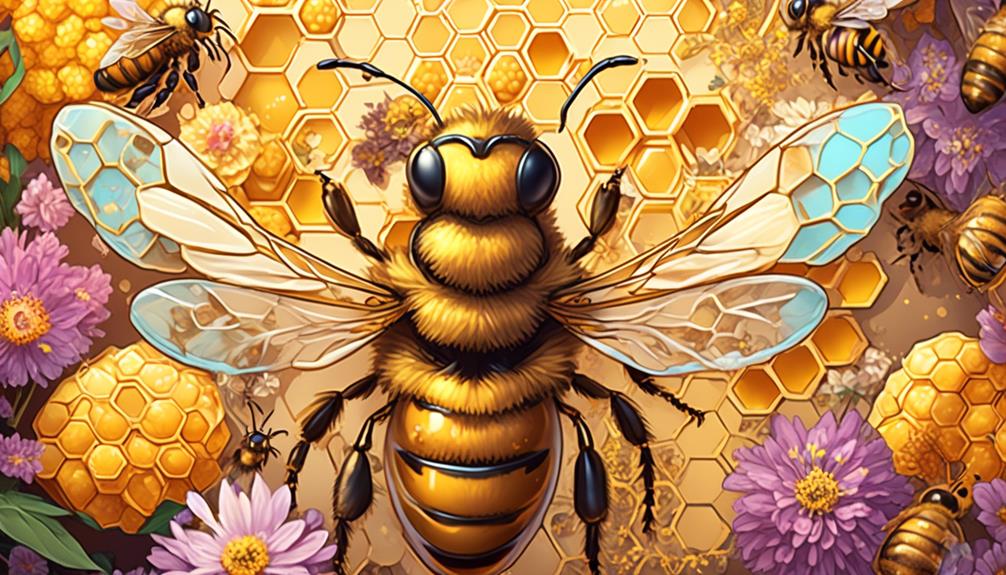
To fully comprehend the fascinating journey of gender transformation in bees, let's delve into the lifecycle of a honeybee, which begins as an egg laid by the queen and undergoes several stages before emerging as a fully grown bee.
Over the course of three days, the queen deposits her eggs into a comb's cell. These eggs then hatch into larvae, which are nourished by 'nurse' bees for approximately six days. Post this period, the cells are capped for the larvae to metamorphose into pupae.
Depending on the type of bee, the pupation period varies. For instance, if it's a worker bee, the transformation from pupa to adult takes 21 days. However, drones take 24 days, and queens a mere 16. Throughout this process, you'll notice the bee's physical transformation – from a white, legless larva to a fully formed honeybee.
This lifecycle isn't just a process of growth, but a crucial determinant of a bee's gender and role within the hive. The queen controls the hive's population and its gender composition through her choice of fertilized or unfertilized eggs. Hence, understanding the lifecycle of a honeybee isn't just captivating, it's key to understanding their gender dynamic.
The Queen Bee's Role
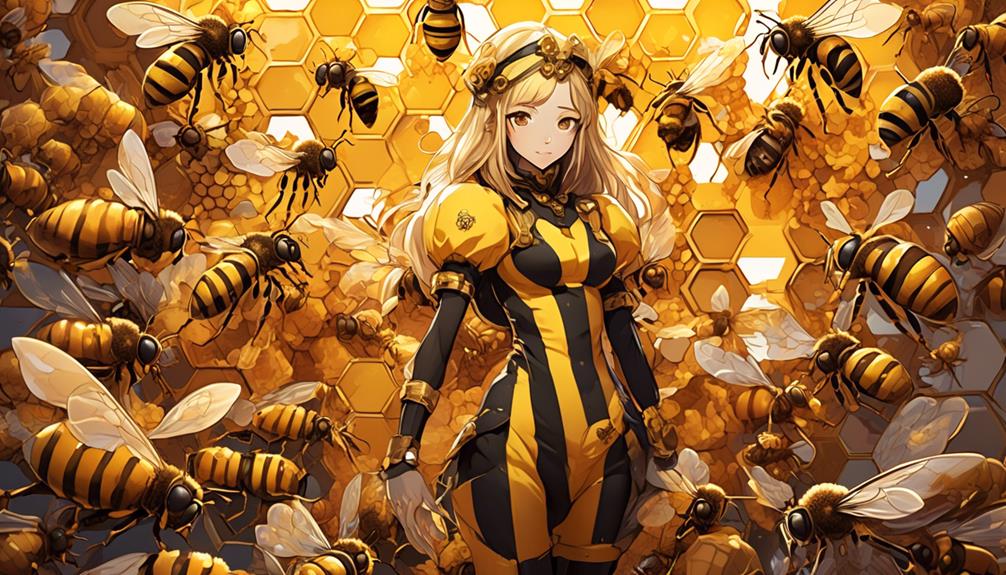
Having grasped the lifecycle of a honeybee, you'll find it's the queen bee who plays a pivotal role in determining the gender dynamics and population of the hive. She's the only sexually mature female in the colony, and her primary role is to lay eggs. However, the queen has a unique ability to control the sex of her offspring. She can choose to fertilize an egg, producing a female worker bee, or leave it unfertilized, leading to a male drone bee.
Queen's Action | Resulting Bee Gender |
|---|---|
Fertilizes egg | Female (worker) |
Doesn't fertilize egg | Male (drone) |
The queen's gender control is a scientific marvel, and it's crucial for maintaining the hive's balance. If the hive needs more workers, she'll produce female bees. If it's mating season and drone bees are needed, she'll produce males. This gender control mechanism is not only fascinating but also showcases the queen's significant role in the hive's survival and growth. Her ability to control the sex of her offspring ensures the hive's continued existence, making her the linchpin of the honeybee world.
Worker Bees and Drones
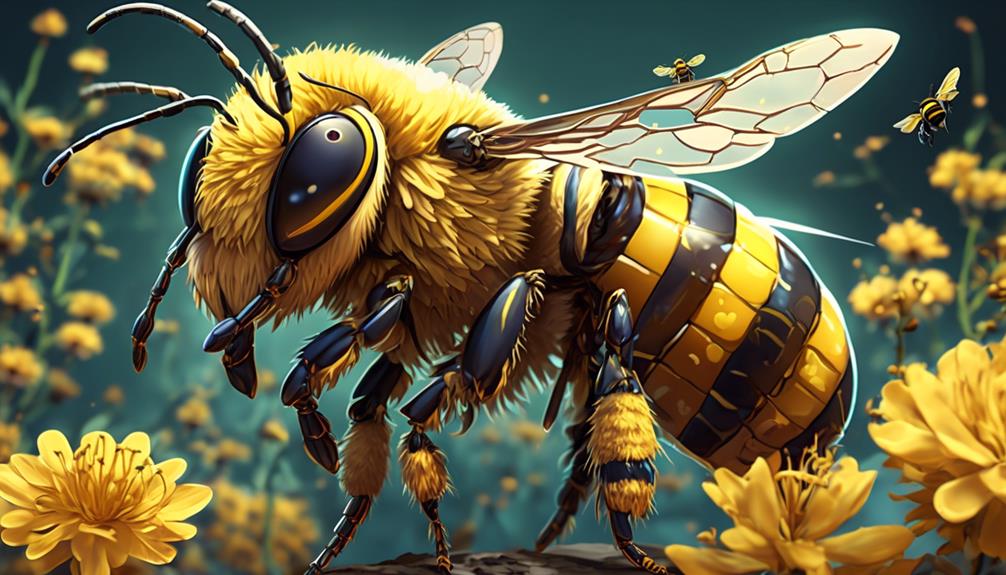
Now, let's delve into the distinct roles of worker bees and drones, key players in a bee colony whose functions and life cycle dynamics are just as fascinating as those of the queen.
Worker bees are always female and make up the majority of the hive's population. They're assigned various tasks, such as cleaning the hive, feeding the larvae, guarding the colony, and foraging for nectar and pollen. Their roles change as they age, an aspect dictated by a tightly regulated genetic mechanism, known as temporal polyethism.
Drones, on the other hand, are the colony's male bees. They don't have the same responsibilities as worker bees. Their primary role is to mate with the queen. After mating, a drone meets a rather grim fate—they die.
Interestingly, a drone's genetic makeup is a bit different. They're haploid, meaning they've only one set of chromosomes inherited from their mother. Worker bees and the queen are diploid, with two sets of chromosomes. This genetic difference is crucial in understanding bee gender dynamics, including the rare instances when worker bees can change their gender to become functioning males—a rare but fascinating phenomenon in the world of bees.
Genetic Factors in Bee Gender
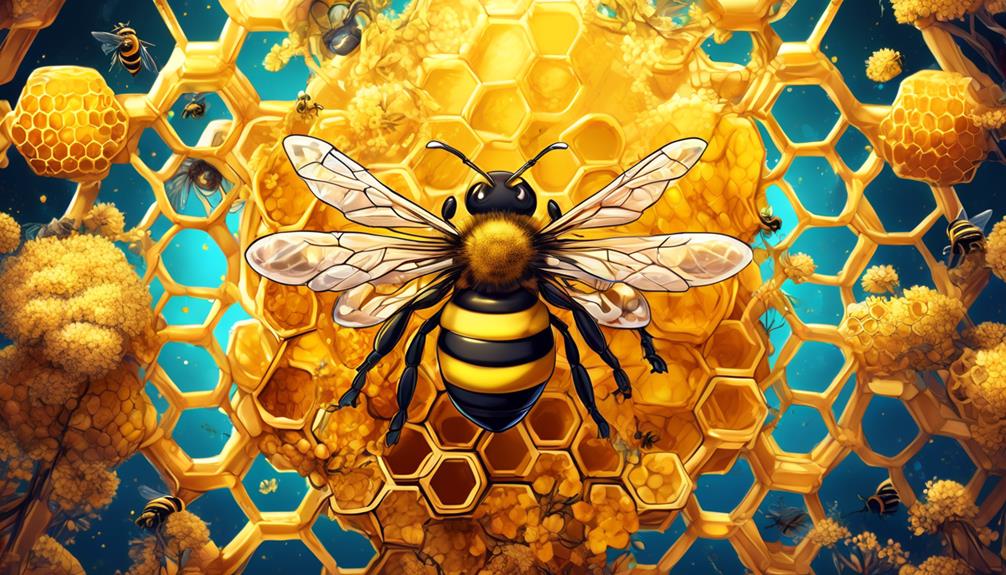
Building on the uniqueness of bee biology, let's decode the genetic factors that govern gender determination in bees, including the intriguing instances of gender change among worker bees. You might be surprised to learn that a bee's gender isn't determined by chromosomes as it's in many other organisms. Instead, it's all down to a process called haplodiploidy.
In this process, unfertilized eggs become males or drones, while fertilized eggs develop into females, either queens or workers. This is controlled by one key gene, the complementary sex determiner (csd) gene. If an egg receives two different versions of this gene, it becomes a female. However, if it gets two identical versions or just one, it morphs into a male.
But there's a twist. Worker bees, genetically female, can sometimes change their behavior and even their physiology to resemble males, in a process called worker policing. This happens when the queen's influence weakens and the colony's survival is at stake.
These genetic gymnastics, underpinned by the csd gene, are part of what makes bees such fascinating creatures to study. So next time you see a bee, remember that its gender story isn't as simple as it may seem.
The Phenomenon of Gender Shifting
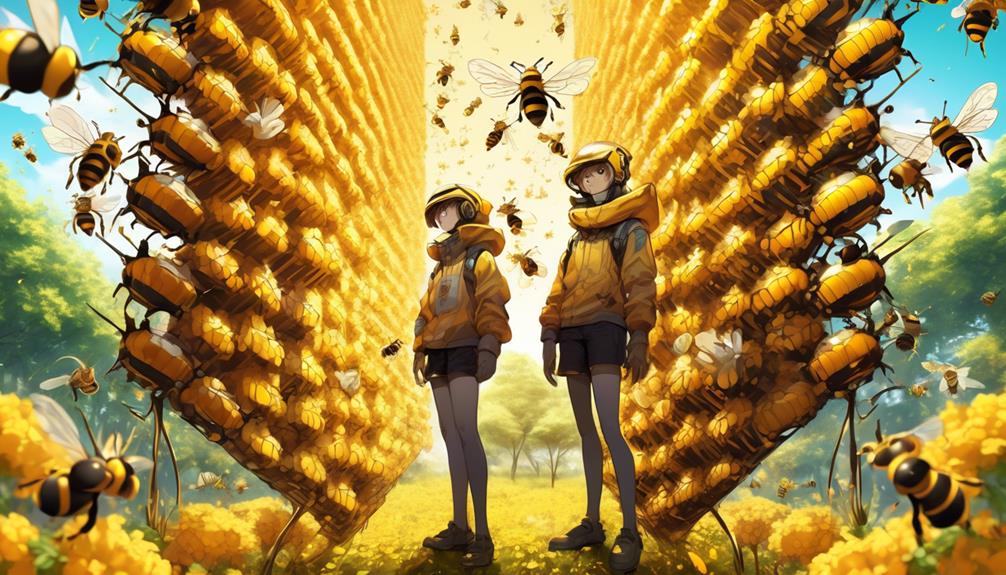
So, how exactly does this gender shifting phenomenon occur in bees? Let's dive into the scientific intricacies of this fascinating process.
In bees, sex determination is largely dictated by the number of chromosome sets an egg receives. Most female bees are diploid, meaning they've two sets of chromosomes. Males, on the other hand, are typically haploid, possessing only one set. However, a genetic anomaly can occur during the fertilization process where a bee egg might end up with either two sperm or a duplicated set of chromosomes from one sperm. This results in a diploid male bee, which is typically sterile and generally considered a genetic dead end.
But here's where it gets intriguing. Some bees carry a gene that can override the normal sex determination system, enabling these diploid males to reproduce. This is known as the 'complementary sex determination' (CSD) gene. If a bee carries multiple different versions of this gene, it can develop into a functional, fertile female instead of a sterile male. In essence, that's how a bee can change its gender.
This gender shifting isn't a conscious decision by the bee, but rather a remarkable demonstration of nature's adaptability.
Frequently Asked Questions
What Is the Social Impact on the Hive When a Bee Changes Its Gender?
When considering the social impact on the hive from a gender transition, it's important to note that it could disrupt the hive's balance. Normally, worker bees, which are female, perform all the tasks. If one were to become male, it wouldn't contribute to these duties, potentially causing strain on the hive.
However, this is purely hypothetical as bees can't actually change their gender.
How Does Gender Change in Bees Affect Their Ability to Produce Honey?
When a bee's gender changes, it affects honey production.
You see, only female bees, or worker bees, can make honey. If a male drone bee somehow becomes a female, it'd theoretically increase honey production. However, if a female becomes a male, she'd no longer contribute to honey making.
It's a complex process, so any significant gender changes could disrupt hive dynamics and overall honey output.
Are There Specific Environmental Factors That Can Trigger Gender Change in Bees?
You're asking about specific environmental triggers that may prompt a change in a bee's gender. It's not that simple. Bees don't change their gender. Their gender is determined by fertilization: fertilized eggs become females, unfertilized ones become males.
Although environmental factors like temperature can affect their development, they can't alter the bee's gender once it's set. It's a common misconception, but in reality, gender change isn't possible in bees.
Does a Bee's Lifespan Change if It Shifts Its Gender?
You're inquiring about a bee's lifespan and if it's affected by gender shifts. Well, it's important to understand that gender change in bees isn't scientifically documented. Their lifespan, often varying by species and role within the colony, isn't impacted by a hypothetical gender change.
Worker bees usually live for a few weeks, while queens can live for several years. So, the idea of lifespan alterations due to gender shifts isn't supported by current bee biology understanding.
Can Gender Change in Bees Be an Adaptive Response to Certain Threats or Challenges?
Yes, gender flexibility in bees can be a reaction to environmental pressures.
When a colony's survival is threatened, worker bees, typically female, can morph into fertile males.
This isn't a common occurrence, but it's an adaptation that boosts the colony's genetic diversity and resilience.
So, you see, even in the bee world, the need for survival can lead to some extraordinary biological changes.
It's nature's way of ensuring species survival against all odds.
Conclusion
In conclusion, bees can't change their gender. Their roles, from queen, worker, or drone, are genetically set from birth.
Despite the queen's ability to control the hive's population, she can't manipulate the gender of her offspring.
The idea of gender shifting in bees, while fascinating, simply doesn't hold up to scientific scrutiny.
Understanding this helps us appreciate the intricate, pre-determined roles within the hive's hierarchy even more.


